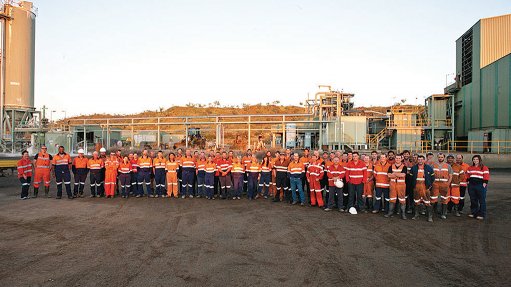
Name: Savannah mine.
Location: The Savannah mine is 240 km south of Kununurra, in the East Kimberley region of Western Australia.
Controlling Company: Panoramic Resources.
Brief History: The bankable feasibility study on the Savannah project was completed in 2002 and an offtake agreement was signed in 2003 with Jinchuan and Sino Mining. A year later, the Savannah plant was commissioned and openpit mining started at the mine. In 2010, the offtake agreement with Jinchuan was extended for 100% of Savannah output for another ten years. In 2014, Panoramic announced a major new mineralised zone discovery – Savannah North, which could be a game changer for the company.
Brief Description: The Savannah underground mine is predominately a nickel sulphide mine, with an associated processing plant and required infrastructure.
Geology/Mineralisation: The Savannah sulphide-rich nickel, copper and cobalt orebody is hosted by the layered mafic- ultramafic Savannah Intrusion, which is enveloped by aluminous metasediments and paragneisses of the Tickalara Metamorphics. The Savannah orebody is mostly confined to a marginal norite unit up to 40 m thick, which developed above the base of the intrusion. Areas of massive, matrix and disseminated sulphide mineralisation, dominated by pyrrhotite, chalcopyrite, pentlandite and minor pyrite occur throughout the marginal norite unit.
Prior to the development of the Savannah openpit, the marginal norite unit outcropped as a prominent 250-m-long limonite-goethite gossan, with fresh sulphide mineralisation developing about 20 m below surface. At an estimated 500 m below the surface, a significant subhorizontal fault, the 500 Fault, cuts the orebody and offsets it 200 m to the north-west. Mineralisation above the 500 Fault is referred to as the Upper Zone and below the 500 Fault as the Lower Zone.
Resources: Total mineral resources as at June 30, 2014, were 3.1-million tonnes, grading 1.53% nickel.
Products: Nickel, copper and cobalt.
Mining Method: The bulk of the ore at Savannah is currently mined using long-hole open stoping, which is a highly mechanised and low-cost method. Access to the top and bottom of the ore block is established through tunnels, with a slot raise created and holes drilled to blast vertical slabs off the ore block. Once the ore block has been blasted and extracted, the stopes are filled with paste (tailings and cement mix) to stabilise the void and allow for the extraction of adjoining ore blocks. The little waste material mined is either stockpiled underground or trucked to surface.
Major Infrastructure and Equipment: The process plant at Savannah comprises a single-stage crusher, semiautogenous mill and flotation, as well as thickening and filtering stages to produce a bulk nickel, copper, and cobalt concentrate. The plant was originally designed for a throughput of 750 000 t/y, but has consistently outperformed the design specifications. Process personnel are confident that the mill’s capacity can reach to between 900 000 t/y and 950 000 t/y.
Prospects: In February 2014, Panoramic announced the significant discovery of the Savannah North zone of mineralisation, located 650 m north-west of the current Savannah nickel mine decline, in which the subsequent drilling from surface and underground, and the interpretation of down-hole electromagnetic surveys confirmed the potential for a large footprint of “Savannah magmatic breccia style” mineralisation.
Contact Person: MD Peter Harold.
Contact Details:
Panoramic Resources,
tel +61 8 9225 0999,
fax +61 8 9421 1008,
email info@panres.com,
website www.panoramicresources.com.